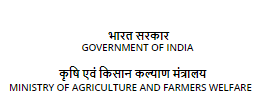SBIEC 14006 - An energycane with high biomas production
Background:
Indian sugar industries are transforming into multiproduct manufacturing sugar complexes to utilize every part of canes supplied to the factory and to improve the financial Viability ct tile sugar industry. Hence most of the sugar factories have now converted into sugar complexes With the combined production of sugar, ethanol, cogeneration, bio—compost etc . Sugar mills are normally crushing for a period of around 150-180 days of the cane harvesting season. The other subsidiary units viz., distilleries and cogeneration are receiving the raw materials from the sugar mill viz., molasses and bagasse respectively during the cane crushing period. The ancillary units are kept idle for the rest of the long period hence underutilized for want of feed stock. Augmenting the feedstocks supply with the addition production and supply of biomass during the offseason will improve the capacity utilization to the greater extent. Recent advancement in conversion of lignocellulose into ethanol also requires additional biomass. Hence it is essential that exclusive energycanes should be developed and cultivated in the factory’s captive energy gardens for the year round supply of raw materials The present innovation SBIEC 14006 is a new technological intervention, which can be grown throughout the year and ensure the supply of quality feedstock to these blottiei industries during the sugarcane crushing offseason.:
Technology Details:
The type II energycane SBIEC 14006 is a potential energycane with high harvestable biomass (265.28 t/ha) and fibre O/o cane (27.54) hence a potential source of biomass feedstock for the biofuel industries. Tall erect canes and nonfiowering are the other desirable features of this energycane. These energycanes can be harvested at any age between 8—14 months as maturity and sucrose accumulation are not important. The whole canes with trash and tops can be harvested and directly fed into the boilers for producing electricity. It is tolerant to many biotic and abiotic stresses and having high nutrient and eater use efficiency. The identified clones are not recommended for cultivation under normal agroclimatic conditional as these clones should not compete with food crops like sugarcane for area. Hence it should be planted where any other agricultural crop cannot be profitably cultivated like low rainfall. water logging, saline and alkaline soils etc.:
Energycane has large potential to ensure continuous supply of raw materials for biofuel industries throughout the year. It is estimated that establishment of 10MW/hr power industry requires about 700 of bagasse with 50% moisture per day. This power plant requrres 3,700 ha of energycane plantation with average harvestable biomass potential of 150t/ha for uninterrupted supply of feedstock throughout the year. The power generated from this plant will be sufficient to cater the agriculture, domestic need and to support local agro based industries for a cluster of villages. Sugar mills with 20MW/hr cogeneration unit also require 3.700 ha of energycane plantation to produce biomass for running the power plant during the crushing offseason to the extent of six months. In addition to the cogeneration industries for the generation of electric power, the biomass potential of the energycanes can be profitably utilised in the production of paper, particle board etc as the physical and chemical properties are comparable with the sugarcane bagasse.


